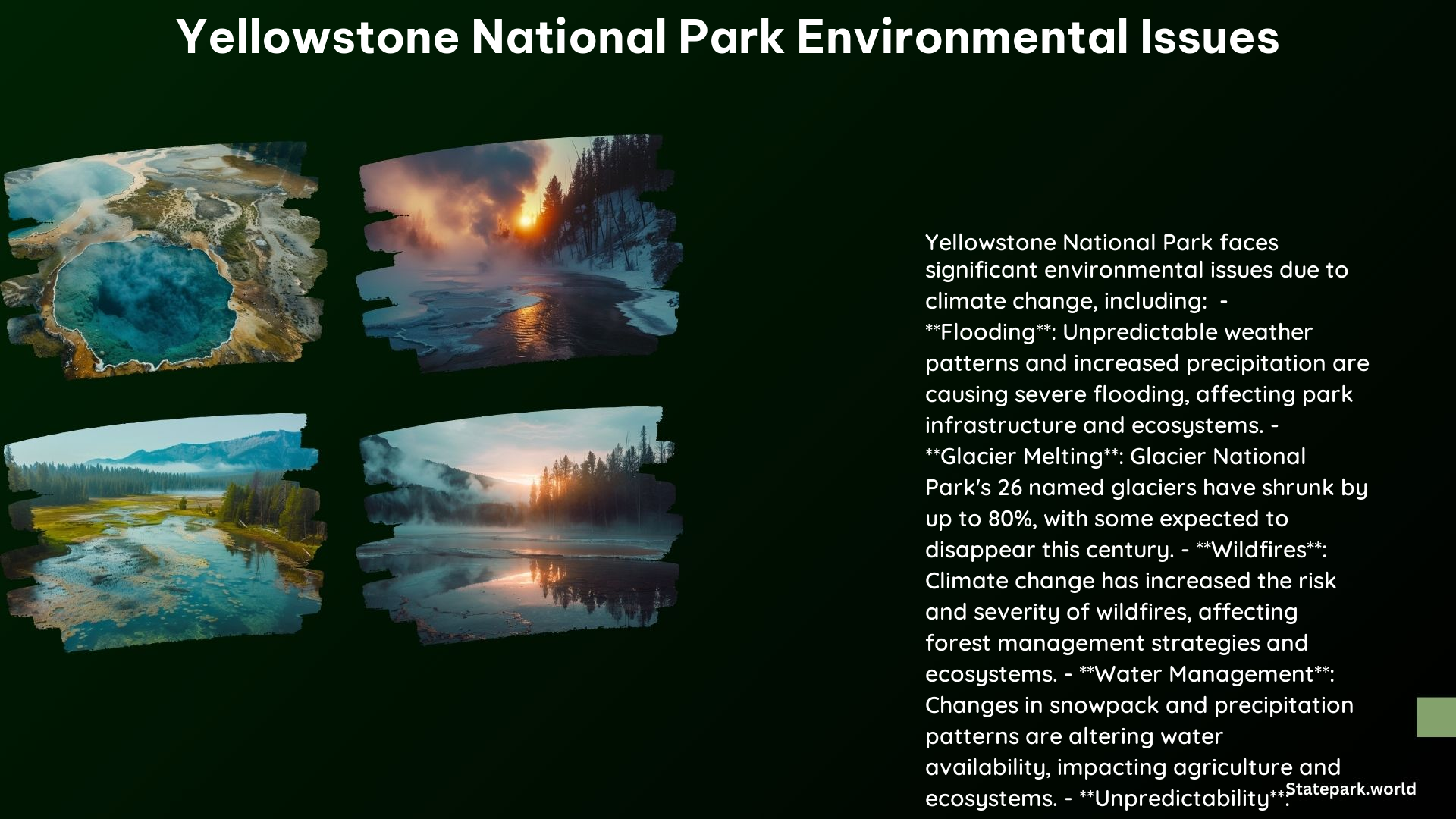Yellowstone National Park, one of the most iconic natural wonders in the United States, is facing significant environmental challenges primarily driven by the impacts of climate change. From rising temperatures and declining snowpack to increased wildfire risk and ecosystem changes, the park is at the forefront of the battle to preserve its natural resources for future generations.
Climate Change Impacts
Temperature Increase
Yellowstone has experienced an average temperature increase of 2.3 degrees Fahrenheit since 1950, with the most pronounced warming at elevations above 5,000 feet. This rise in temperature has far-reaching consequences for the park’s delicate ecosystems.
Snowpack Decline
Snowfall has declined in the Greater Yellowstone Area, with a nearly two-foot decrease in annual snowfall since 1950. This decline in snowpack affects the park’s water sources and the overall health of its ecosystems.
Wildfires
Climate change has led to an increased risk of wildfires in Yellowstone, with more frequent and severe fires expected in the future. These fires can have devastating impacts on the park’s landscapes and wildlife.
Changes in Ecosystems
Rising temperatures are altering the composition of grasslands, affecting bison populations and migrations, and impacting wetland creatures. These changes can have cascading effects throughout the park’s intricate web of life.
Sustainability Efforts

Renewable Energy
Yellowstone is working to improve energy conservation and increase renewable energy production, with goals to achieve net-zero energy in new buildings and major renovations.
Water Management
The park is implementing water-saving measures, assessing water loss from old infrastructure, and ensuring moisture and stormwater design to protect buildings and the natural environment.
Fleet Transition
Yellowstone is transitioning its fleet to clean and zero-emission vehicles, with plans to integrate electric technology and install EV charging infrastructure.
Waste Reduction
The park aims to reduce waste and prevent pollution by building awareness of sustainable procurement practices, assessing waste management programs, and mitigating environmental liabilities.
Protecting Natural Resources
Bison Conservation
Yellowstone is working to restore bison populations and understand how they share changing grassland resources with other ungulates. Data collection helps inform park management policies.
Wildlife Habitat
Efforts are being made to improve wildlife habitat, including the reintroduction of wolves and the protection of native species from the impacts of climate change and human activity.
Addressing Climate Change
Climate Change Assessment
Yellowstone has conducted a comprehensive climate assessment to understand the impacts of climate change on the park’s ecosystems and infrastructure.
Adaptation Strategies
The park is developing strategies to adapt to a changing climate, including assessing the vulnerability and resilience of its built assets, systems, and operations.
Visitor Impact
Tourism Management
Yellowstone is working to manage tourism sustainably, reducing the impact of visitor traffic on the park’s ecosystems and infrastructure.
Education and Awareness
The park is promoting education and awareness about climate change and sustainability, encouraging visitors to take action to mitigate their own environmental impact.
Collaboration and Funding
Partnerships
Yellowstone is partnering with organizations like Yellowstone Forever to support sustainability projects and data collection, ensuring the park remains environmentally sustainable for future generations.
Funding
The park is seeking financial support to implement sustainability initiatives, including in-kind donations of materials and expertise.
Key Statistics
| Statistic | Value |
|---|---|
| Temperature Increase | 2.3 degrees Fahrenheit since 1950 |
| Snowpack Decline | Nearly two feet since 1950 |
| Wildfire Risk | Increased risk of wildfires due to climate change |
| Bison Conservation | Data collection and habitat restoration efforts underway |
| Sustainability Goals | Net-zero energy, water conservation, fleet transition, waste reduction, and adaptation strategies |
References
- USC Today. (2022, June 17). Yellowstone flooding underscores environmental pressures facing U.S. national parks. Retrieved from https://today.usc.edu/yellowstone-flooding-underscores-environmental-pressures-facing-u-s-national-parks/
- Ecology Project International. (2023, January 9). Climate Change in Yellowstone: Understanding the Home on the Range. Retrieved from https://www.ecologyproject.org/post/climate-change-in-yellowstone-understanding-the-home-on-the-range
- Yellowstone Forever. (n.d.). Sustainability. Retrieved from https://www.yellowstone.org/sustainable-yellowstone/
- National Park Service. (2020, September 25). Climate Change – Yellowstone National Park. Retrieved from https://www.nps.gov/yell/learn/nature/climate-change.htm
- Yale Environment 360. (2021, June 23). Yellowstone and Warming: An Iconic Park Faces Startling Changes. Retrieved from https://e360.yale.edu/features/yellowstone-and-warming-an-iconic-park-faces-major-change
